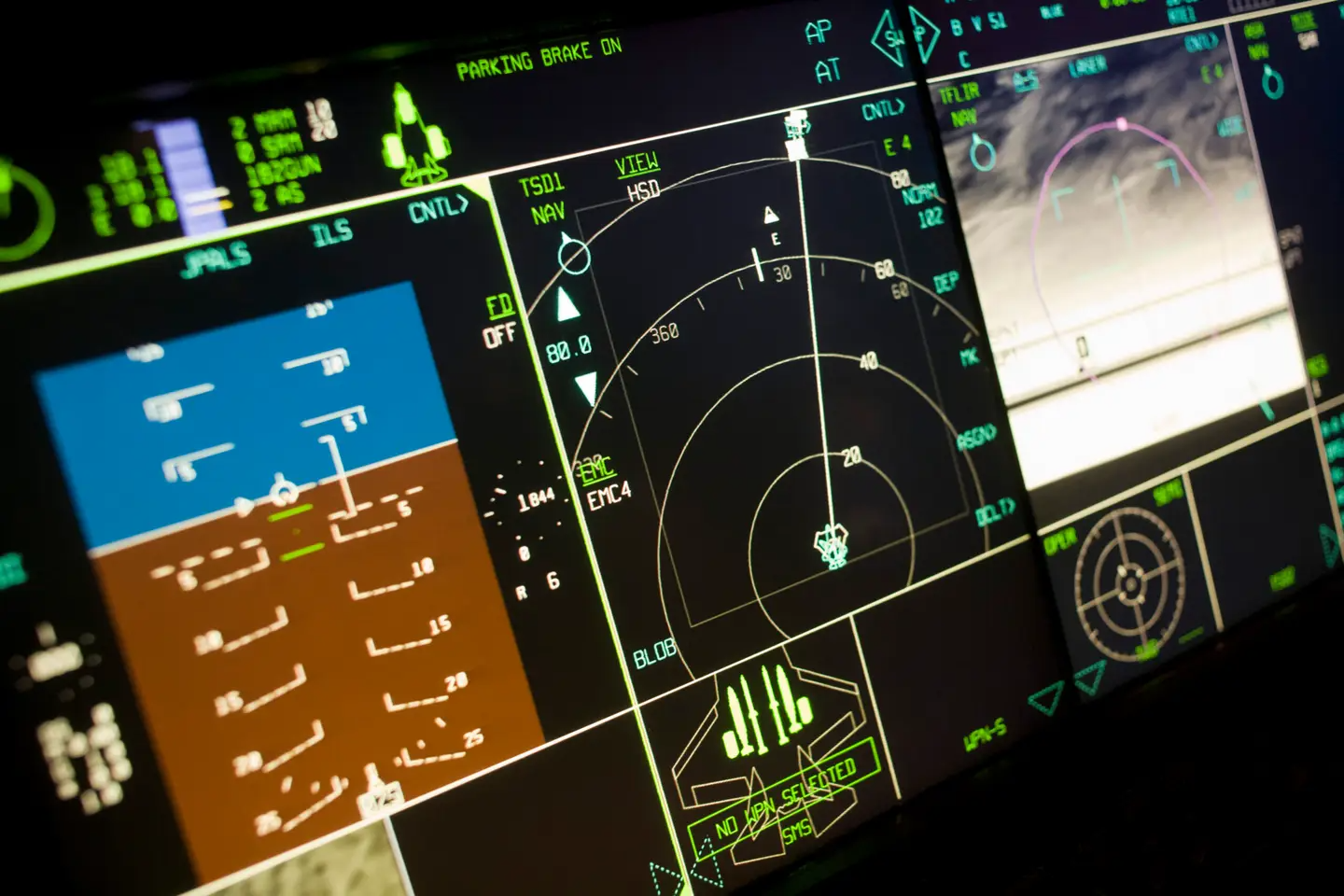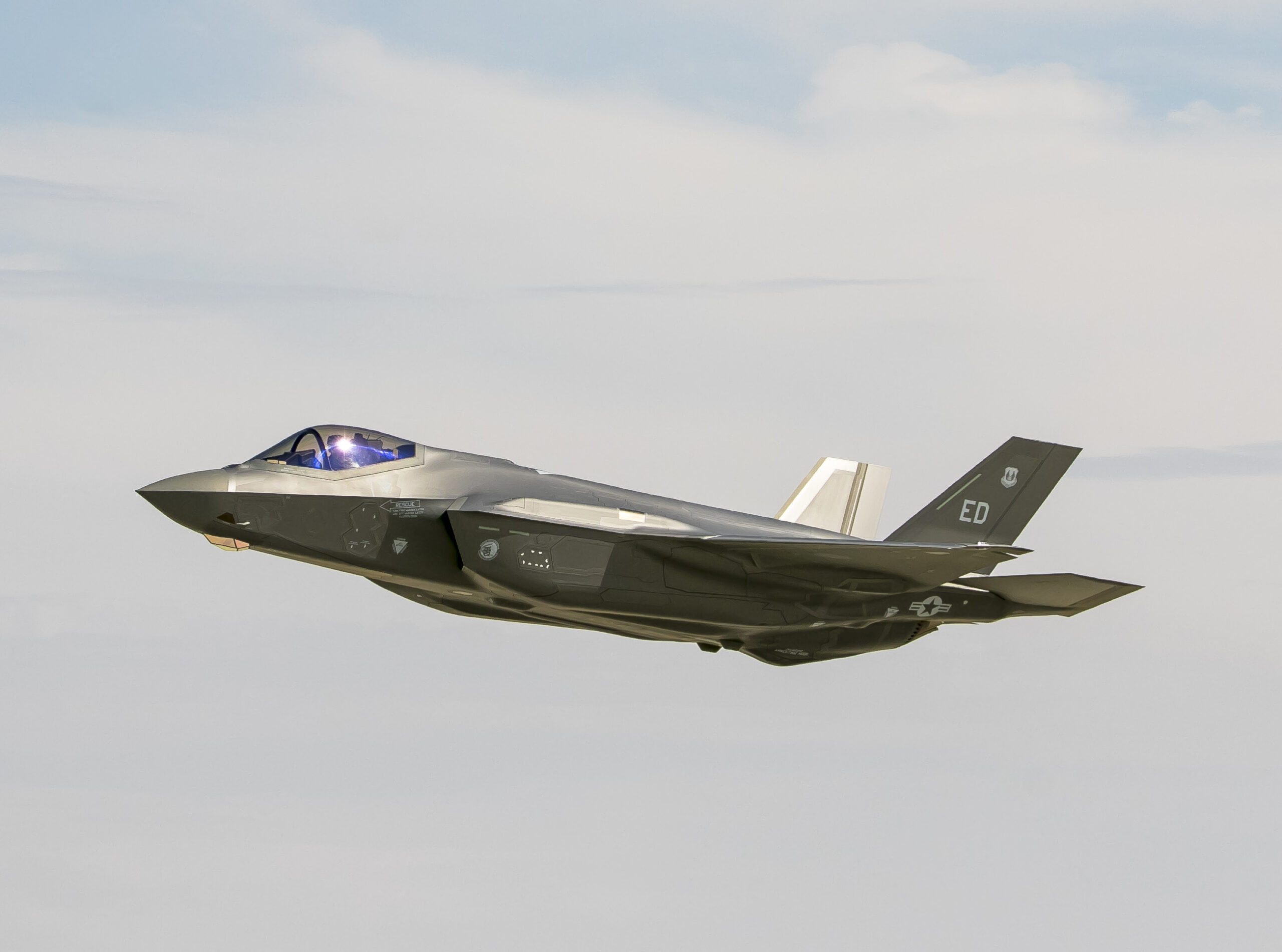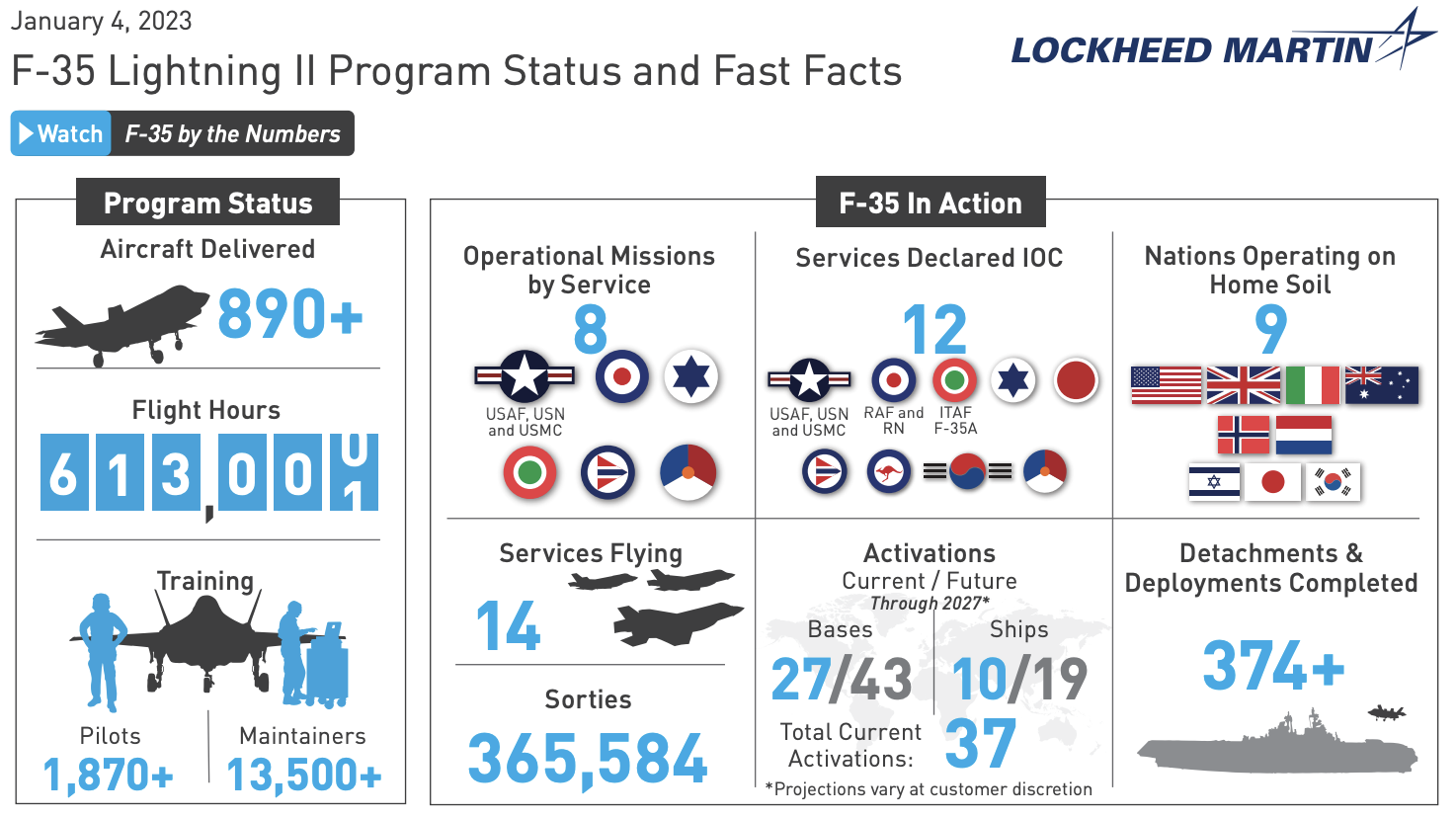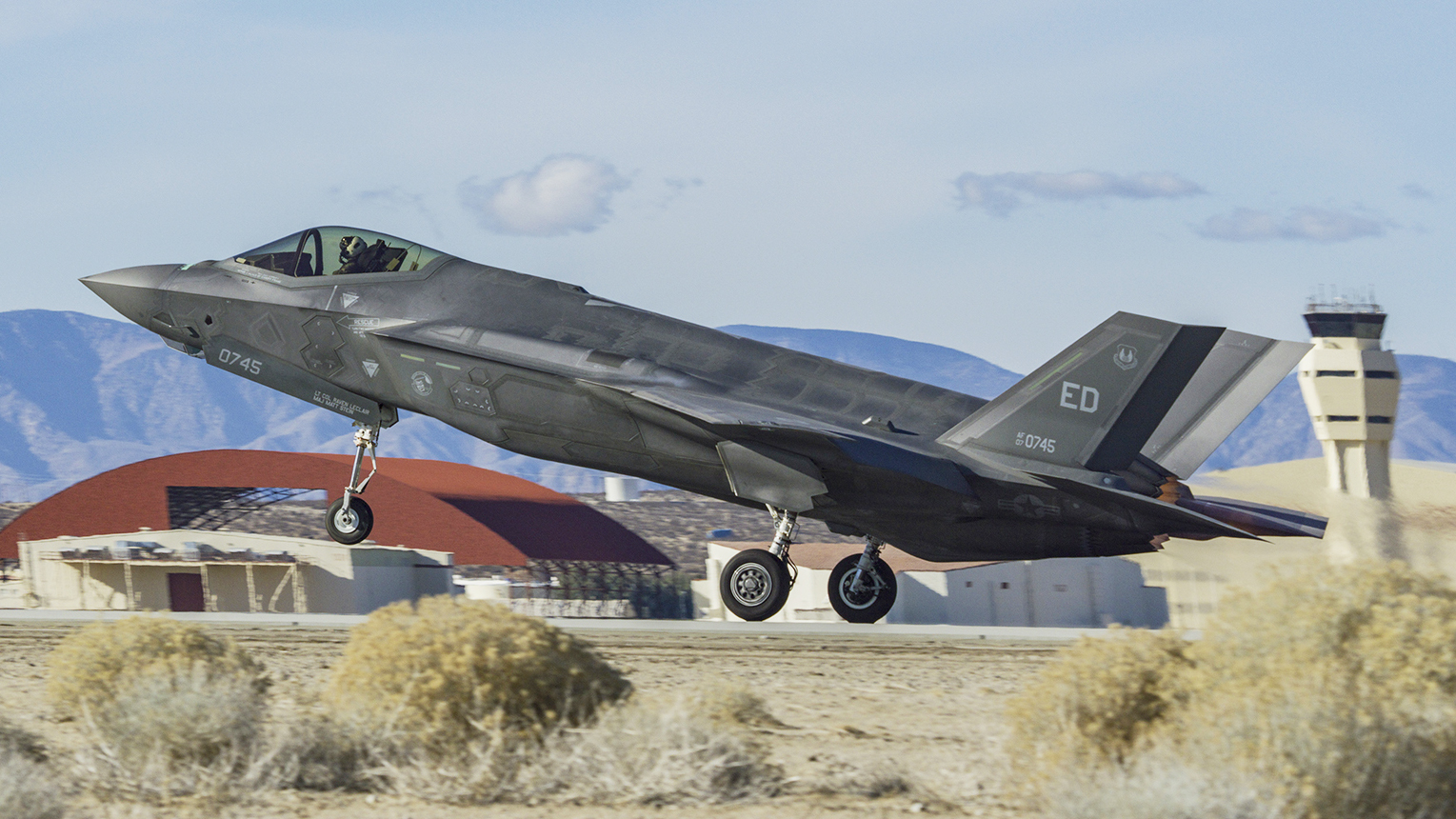An F-35 Lightning II has flown for the first time in the new Technology Refresh 3, or TR-3, configuration. TR-3 is intended to significantly upgrade the Lockheed Martin-built stealth fighter’s core processor, memory unit, and associated avionics so the platform can better support all of the new capabilities slated to equip the type under the upcoming Block 4 modernization program, which we now know includes a brand new radar.
According to the F-35 Joint Program Office (JPO), a developmental test team from the 461st Flight Test Squadron (FTS) at Edwards Air Force Base, California, supported the test flight along with the F-35 Lightning II Integrated Test Force, which took place on Jan. 6. For the mission, U.S. Air Force experimental test pilot Maj. Ryan Luersen flew the F-35 with tail number AF-7, as a specially instrumented flight test aircraft and the first with TR-3 upgrades installed. AF-7 has been in Edwards’ test fleet for years, but it is now helping to lead the charge with the new upgrade pathway.

In August of last year, the ‘Deadly Jesters’ of Edwards Air Force Base’s 461st FTS and the F-35 Lightning II Integrated Test Force received the first of what will eventually become a fleet of six enhanced F-35 testbed jets. According to the service, the rest of the batch will be delivered incrementally over the next few years and will be used to evaluate the F-35’s new capabilities, weapons, and operating system tied to TR-3 and the related Block 4 initiative.
During the Jan. 6 test, Luersen performed what is known as a functional check flight profile meant to “verify aircraft airworthiness and system stability” of TR-3 aboard the F-35, explained the JPO. The overall flight lasted for 50 minutes above the Mojave Desert and saw the stealth jet reach heights of 35,000 feet and a velocity of just below the speed of sound. The test served as only the beginning of flight evaluations with TR-3, as the JPO added that developmental and operational tests will continue through 2023.

“This is a significant achievement for the F-35 program,” said Air Force Lt. Gen. Mike Schmidt, program executive officer for the F-35 JPO. “TR-3 is the F-35’s critical computer processing electronics upgrade that will continue to provide all our pilots with the capability they need to be successful against any adversary. There is still a lot of work to do and I am confident that our industry partners and government team will get the job done.”
At present, TR-3 is broadly known as the initiative that will revamp the F-35’s core processor to achieve 25 times more computing power, its memory unit, and its panoramic cockpit display system. This would be an improvement over the jet’s current computing system, TR-2, which has been deemed inadequate to support the powerful capabilities that Block 4 will bring to the F-35 platform, a number of which are software-based.
“Technology Refresh 3 modernizes the computational core of the F-35 air vehicle,” said Air Force Lt. Col. Christopher Campbell, commander of the 461st FTS and director of the F-35 Integrated Test Force. “Therefore, new TR-3 hardware and software affect nearly every aircraft feature. Today’s event was just the start of a comprehensive flight test campaign that will both verify and improve the safety, stability, and performance of the whole F-35 weapon system in this new configuration.”

While some of these Block 4 upgrades remain confidential, others are known to include a new active electronically scanned array (AESA) radar designated as AN/APG-85, a major upgrade to the jet’s Distributed Aperture System (DAS) and Electro-Optical Targeting System (EOTS), and the integration of a host of new weapons like the GBU-53/B StormBreaker precision-guided bomb. Although, it’s worth noting that changes to the airframe or the jet’s stealth coatings are also a possibility under Block 4, as well.
However, finally getting to the point where TR-3 could be tested in flight wasn’t smooth sailing. The Government Accountability Office last year reported that complexities in the development of TR-3 increased the cost of the overall Block 4 modernization effort by $330 million in 2021 and contributed to program delays. In what was likely a response to this complication, the JPO in its announcement of the flight test said, “the TR-3 program has overcome technical complexity challenges with hardware and software, and is now on track to deliver capability.”

All three variants of the F-35 will be subjected to this overhaul. The current goal is for TR-3 to roll out with new production Lot 15 through 17 F-35 deliveries, with Lockheed Martin hoping to begin delivering Lot 15 jets in mid-2023. But according to Air Force budget justification documents for Fiscal Year 2023, all F-35s from Lot 5 to Lot 14 are to be retrofitted with TR-3. The subsequent Block 4 upgrade package isn’t slated to wrap until 2029, and if all goes as planned, this is projected to be introduced beginning with Lot 17 variants.
There are concerns in the United States and among other F-35 operators about the potential for Block 4 upgrades to be cost-prohibitive to integrate into older jets if that’s the route Lockheed Martin and the JPO end up taking. To date, Lockheed Martin has delivered over 890 F-35s of all types to a variety of customers, and the price of upgrading even a portion of these older models to the TR-3 configuration with at least some Block 4 capabilities would likely be significant. Still, the capability that Block 4 brings, which you can read more about here, could very well be worth the price.

Lockheed Martin and the Pentagon recently finalized a gargantuan contract worth $30 billion to deliver up to 389 modernized fighter F-35 jets for the U.S. military and international customers. The order consists of 145 Lot 15s, 127 Lot 16s, and the option for 126 Lot 17s to be delivered to Finland, Belgium, and Poland. Canada also just closed on its own deal to procure 88 Block 4 F-35s that will replace its aging CF-18 Hornets, with the first deliveries are expected to take place in 2026.
It’s safe to say that the F-35 will be undergoing quite an evolution over the next few years. The transformation will seek to boost the jet’s overall survivability, lethality, reliability and utility as Lockheed Martin and the Pentagon work to better future-proof the aircraft so that it can confront high-end threats in the decades to come.
Contact the author: Emma@thewarzone.com
